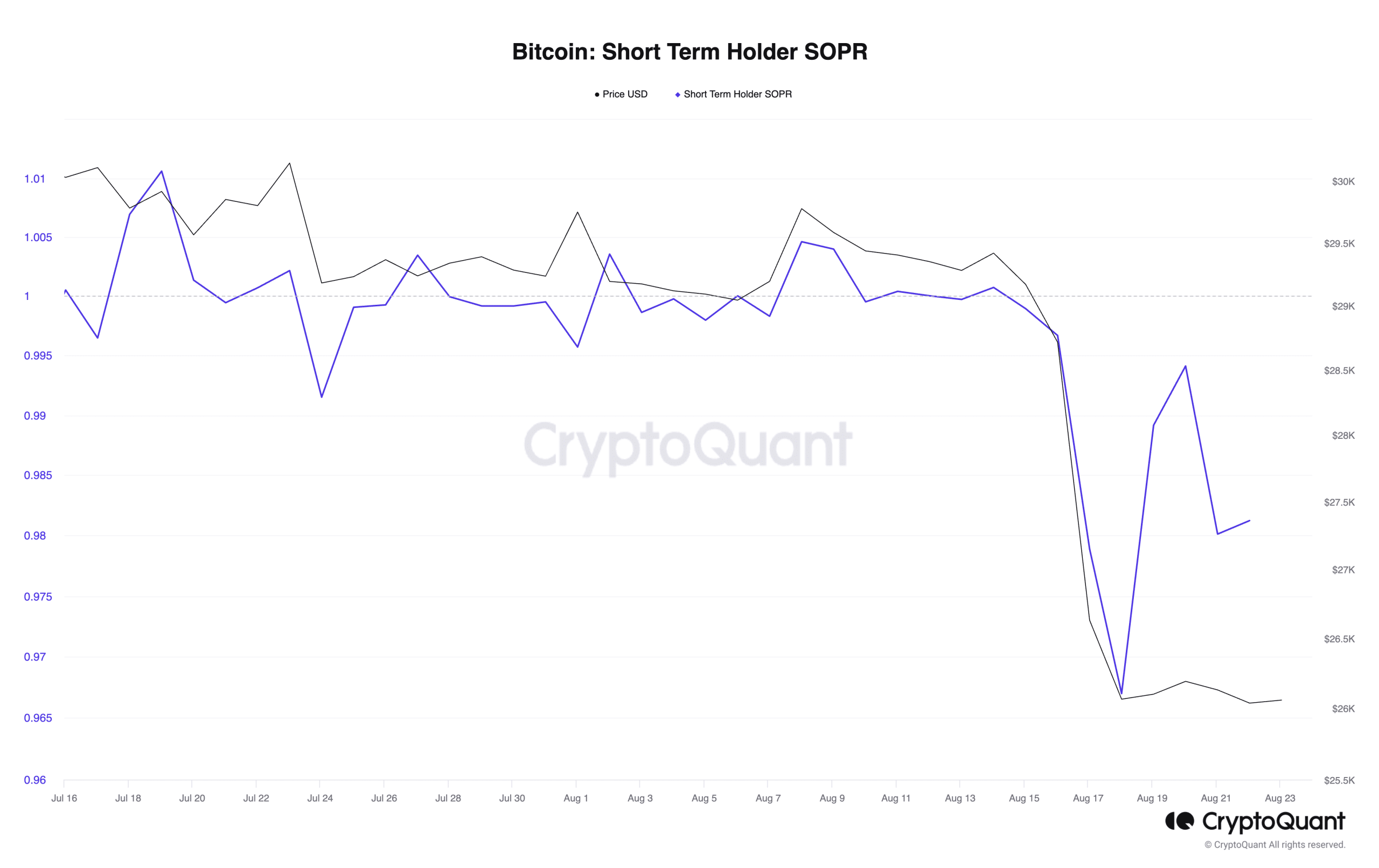- Short-term holders of Bitcoin continued to sell their profits using a metric called Spent Output Profit Ratio (STH-SOPR) at the time of writing.
- According to Onchained, the current STH-SOPR level resembled a previous price correction in March 2023 when BTC’s price dropped from $25,000 to $19,800 and STH-SOPR also dropped to 0.96.
- After selling BTC for a few days, funding rates on crypto exchanges turned positive. This indicates that investors are taking long positions to support a rally in BTC’s price.
Short-term investors in Bitcoin are feeling down, seeing losses; Traders are not abandoning BTC and showing interest in long positions.
Short-Term Bitcoin Investors in Trouble
Short-term holders of Bitcoin continued to sell their profits using a metric called Spent Output Profit Ratio (STH-SOPR) at the time of writing. The STH-SOPR value of this investor group was moving downwards.
Short-Term Holder Spent Output Profit Ratio (STH-SOPR) is a metric used to measure the profitability of short-term holders of a specific crypto asset. It provides insights into whether investors holding a particular asset for three to six months are in a profitable or unprofitable position.
If STH-SOPR is above 1, it generally indicates that short-term holders are selling their coins on average with a profit. Conversely, if STH-SOPR is below 1, it indicates that these holders are selling at a loss. CryptoQuant analyst Onchained, commenting on the liquidity reduction effect of last week, stated that STH-SOPR dropped to 0.96.
According to Onchained, this STH-SOPR level resembled a previous price correction in March 2023 when BTC’s price dropped from $25,000 to $19,800 and STH-SOPR also dropped to 0.96.
According to data obtained from CryptoQuant, this metric was 0.98 at the time of writing. Short-term holders are still selling at a loss in an environment where BTC is trading above $26,000, but the losses are less pronounced.
Record low levels in BTC distribution
Evaluating BTC’s price movements on a daily chart showed that the main momentum indicators dropped to levels seen in 2020.
BTC’s Relative Strength Index (RSI) was identified as 20.90, while Money Flow dropped to 6.79 at the time of writing. These indicators confirmed a high amount of BTC selling among daily traders, most of which occurred after last week’s sudden price drop.
Since August 17, bears have taken control of the market. A look at the Directional Movement Index (DMI) showed a positive directional index (green) at 10.32 and a negative directional index (red) at 35.86.
In such situations, downward movements are more pronounced than upward movements, indicating a downward price trend. BTC’s Awesome Oscillator, which also indicates weakened buying pressure, has been marked with downward-facing red histogram bars since last week.
Despite increasing coin distribution among daily traders, players in the futures market have taken a different approach. After selling BTC for a few days, funding rates on crypto exchanges turned positive. This indicates that investors are taking long positions to support a rally in BTC’s price.







